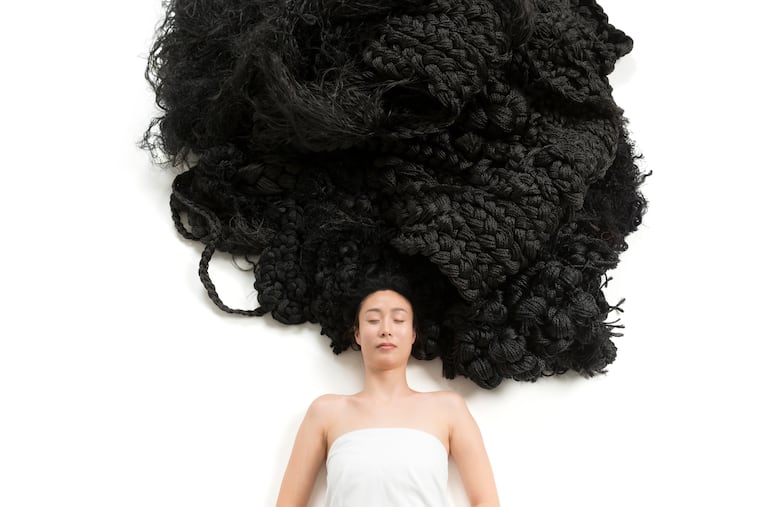Contemporary Korean art comes to Philly, but some may not last very long
A theme of impermanence prevails in Philadelphia Museum of Art’s “The Shape of Time: Korean Art after 1989” exhibit

With Korean pop culture wedged deep into the public’s imagination ― K-pop sensation BTS, Netflix’s Squid Game, Oscar-winning Parasite, Pachinko, the book about Korean immigrants in Japan turned TV K-drama — curators Hyunsoo Woo and Elisabeth Agro feel they’ve happened upon just the right moment for the Philadelphia Museum of Art’s fall exhibit: “The Shape of Time: Korean Art after 1989.”
It is a happy accident as the exhibit has been a decade, maybe three, in the making. Featuring 28 Korean artists, (some Korean-born, some still living in Korea, others of Korean descent), the show’s overall theme is “temporal dissonance,” says Woo, the museum’s deputy director for collections.
“As a person who’s been in the field of Korean art for the past 30 years in the U.S., when I first came to the States, Korea was nowhere to be found,” said Woo. “I studied our history in Korea, came to this country with the master’s degree and I was so frustrated. Where is Korea? A mere 30 years later, we are in a such a different place.”
The exhibit, which opens Oct. 21 and runs through Feb. 11, marks 1989 as a historic turning point — one year after the Seoul Olympics, the year South Koreans were allowed to travel internationally, a year of transformative global events including the fall of the Berlin Wall; a year art historians and others view as the beginning of the extended 21st century.
The art “runs the gamut of media,” said Agro, “and is designed to be a mind-bender that pulls you into a contemplation of time and space, and the influence of past, present, and future.”
The earliest work, though, dates to 2000, giving the artists, all born between 1960 and 1980, more than a decade to absorb the influence of the new era and let it seep into their creative lives and work. The show is divided into five thematic sections: Dissonance, Reinvention, Portraying Anxiety, Being Seen, and Co-Existence.
“This show is not necessarily about pop culture,” Agro said. “It is about Korea through the lens of contemporary art. We’re the Art Museum. We’re not the history museum.”
The theme of impermanence will be dramatically portrayed, in a somewhat atypical move for the museum.
Artist Meekyoung Shin, working entirely with Neutrogena soap bars that will slowly dissolve as the exhibit progresses, was asked to imagine a work that could complete the empty pediment in the museum’s courtyard (though it will not actually be placed there).
The museum’s iconic (completed) pediment features 13 figures of classical mythology, and Shin’s work will be called: Eastern Deities Descended.
A work of unfired clay houses by Kim Juree will mimic a disappearing gentrifying neighborhood and will also slowly self-destruct while on view. The work is entitled Evanescent Landscape — Hwigyeong: Philadelphia
“It’ll be in a state of demolition as the show progresses,” Agro said.